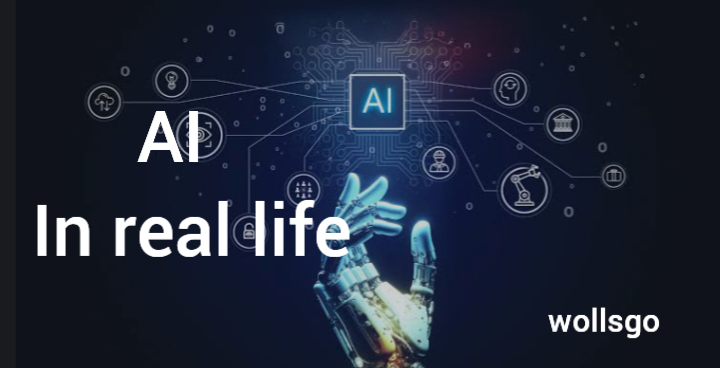Introduction:
Artificial Intelligence (AI) has moved beyond science fiction into the real world. From smartphone to self driving cars, personalized shopping to advanced healthcare diagnostics, AI is quietly and sometime loudly transforming our lives.
But how does AI actually work in real life? What happens behind the scenes when you ask Alexa to play your favorite song. or when Netflix recommends a movie?
This in depth guide explores how AI works under the hood, the technologies involved, and its real world applications not just from a consumer point of view but also from technical, business, ethical, and social perspectives.
What is Artificial Intelligence?
Artificial Intelligence is a branch of computer science focused on building systems capable of performing tasks that typically require human intelligence. These tasks include:
- Recognizing speech or images
- Understanding natural language
- Making decisions and predictions
- Learning from data
AI can be categorized into three main types:
1. ANI (Artificial Narrow Intelligence): Focused on one task (e.g., voice assistants, facial recognition ).
2. AGI ANI (Artificial Narrow Intelligence): Hypothetical, human like reasoning ability across tasks.
3. ASI ANI (Artificial Narrow Intelligence): Beyond human intelligence still theoretical.
Most real life AI today falls under ANI.
How AI Works: The Core Components
To understand how AI works real life, we need to break down its core components:
1. Machine Learning (ML)
Machine Learning is a subset of AI that enables systems to learn from data instead of being explicitly programmed.
- Supervised Learning : The model learns from labeled data (e.g., emails marked as spam or not ).
- Unsupervised Learning: The model finds hidden patterns in unlabeled data (e.g., customer segmentation ).
- Reinforcement Learning : An agent learns by interacting with the environment (used in gaming, robotics).
ML uses algorithms like Decision Trees, Neural Network, Random Forests, and Support Vector Machines.
2. Neural Networks and Deep Learning
Inspired by the human brain, neural networks are layers of algorithms that process information, Deep learning involves neural networks with multiple layers and is used in complex tasks like image recognition, autonomous driving, and voice synthesis.
- Input Layer: Receives raw data (e.g., image pixels).
- Hidden Layers: Extract features through computations.
- Output Layer: Provides the final result (e.g., dog or cat )
Popular deep learning architectures:
- CNN (Convolutional Neural Networks): Images and vision
- RNN (Recurrent Neural Networks): Sequences and language
- Transformers: Language models like ChatGPT
How AI Works in Real Life Applications
1. Virtual Assistants (Alexa, Siri, Google Assistant)
2. Recommendation Systems (Netflix, Amazon, YouTube)
A Comprehensive Look at the Dual Role of Artificial Intelligence in Cybersecurity





Leave a Reply